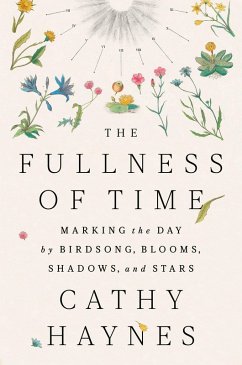A joyful exploration of the forgotten art of marking time from nature’s daily rhythms and a call to notice the wonders of the living world, wherever you are. Most of us live fully digitized lives, staring at screens and tracking our data. We think of time as the relentless march of abstract, identical hours that control the shape of our days. But what might we gain from exploring the forgotten art of sensing the natural patterns of the world around us? Cathy Haynes argues that by devoting more attention to the living rhythms of plants, animals, and light, we stand to reap inner riches that can bring us fascination and delight. To discover a new sense of time, she draws on the knowledge of astronomers, botanists, ornithologists, town planners and experts on sundial-making, shepherding, and traditional work songs. In an earlier world, we used to mark daily cycles by shadows shrinking or the midday glow over a mountaintop. We called a phase of darkness “cockcrow” and named lively flowers for when they open and close. When working, we may have synchronized a task by singing. We’d notice the quality of the light changing at dusk and might mark the passing of night by the motion of the stars. The Fullness of Time is an alternative history of timekeeping and an invitation to tune into the subtle changes happening around us throughout the day—even in the concrete-and-glass heart of the twenty-first-century city. Charming, gentle, and wise, it is a reminder that there are wonders to be found right before us if only we look around.
Bitte wählen Sie Ihr Anliegen aus.
Rechnungen
Retourenschein anfordern
Bestellstatus
Storno








